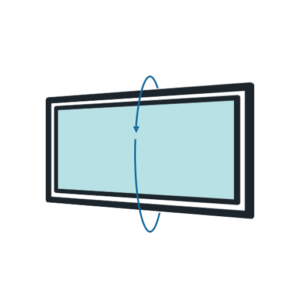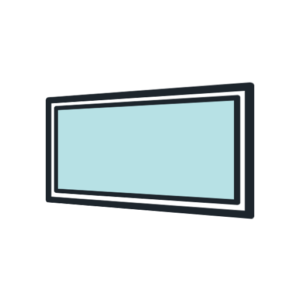Thanks to the lightweight and thin shape of flat-screen TVs it is very easy to mount it directly on the wall to save space and improve the aesthetics of your rooms, but it is good that before you buy a wall-mount, you learn how to choose correctly between quite a few types in the market. Here I present 4 aspects that you should take into account at the time of making your purchase and avoid future problems.

1. What type of movement do you want to have?
First, you need to decide if you want a fixed, tilting, or full-motion mount. That depends on the size and shape of your room and how high you plan to mount the TV on the wall.
Fixed Position TV Mounts
Also called low profile TV mounts, are the simplest TV mount option. As the name suggests, fixed position mounts are stationary. This type of mount holds the TV snug against the wall, flush with the wall. It keeps the TV closer to the wall than any other type of mount, giving a very clean, custom look.

When a Fixed Position Mounts Work Best?
- Your TV can be mounted at a single, optimal height.
- Your viewing area is directly in front of the TV.
- TV glare isn’t an issue.
- You don’t need to access the inputs on the back of the TV.
- You want your TV to be flush with the wall.

Tilting TV Mounts
Tilting mounts allow your TV to angle your TV vertically while maintaining its position on the wall. They do not allow any horizontal movements., so you can have the best viewing experience from multiple heights. This is ideal if you need to mount your TV above eye level.
If you’re mounting a larger TV, you also want to consider a tilting TV wall mount that includes an extension, so you can get the maximum tilt. Without the extension, larger TVs hit the wall before full tilt is reached.

When a Tilting Mount Works Best?
- You need to mount your television above eye level. Examples of this would be mounting a TV above a fireplace or over a piece of types of furniture like a dresser or bureau.
- You want to view your TV from multiple heights. You want to be able to tilt your TV downward when you’re on the floor playing video games or following along with a workout DVD, then easily tilt your TV back to the ideal position for watching TV from the sofa.
- You’re dealing with TV glare and need to tilt your screen to combat reflections coming from indoor or outdoor lighting sources.

Full Motion TV Mounts
Also called articulating TV mounts or swivel TV mounts, are the most flexible type of TV mounts. With an articulated swingarm, you can pull the TV out, swivel it left and right and tilt it down. With all this motion and flexibility, you can point your TV anywhere in the room.

When a Full Motion Mount Works Best?
- You like hiding your TV into an armoire from which you can easily extend it outwards when you’re ready to watch.
- You need flexible viewing angles due to the shape of your room, the way your furniture is arranged or if your windows are on an adjacent wall to your TV and you need to swivel the screen away from ambient light.
- Your TV has to be in the corner to save space. You may run into this scenario if you have limited wall space due to window placement.
- You want access to the back of your TV. If you regularly switch out HDMI connected devices like a Blu-ray player, streaming media device or gaming system from behind your TV, a full motion mount makes the back of the TV easily accessible.
2. Is your Mount VESA compatible?
What is VESA? Most TV mounts follow compatibility standards set by the Video Electronics Standards Association or VESA. The VESA mounting pattern is a set of four screw-holes arranged in a rectangle on the back of your TV, and corresponding holes with the same spacing on a wall-mount. This standard ensures that all VESA-compatible TVs and mounts are totally interchangeable. It’s a good bet that any TV mount sold today is VESA-compatible, but you should always confirm, just to be sure.
3. Cables and Wires
While installing your TV, you will quickly find a need for wire management on your wall mount. Nothing will ruin the appearance of your install quicker than loose wires hanging down. Some mounts offer channels in the body of the mount where the wires can be run neatly and hidden. While others simply offer clips on the outside of the frame to hold the wires in place. You should check to see if any wire management is included with any mount that you purchase.
4. Do it yourself or contact a professional?
The most important aspect of your flat panel purchase is who will be installing the TV. Most of the wall mount on the market can be easily installed by 2 relatively handy adults. It is important to read all safety warnings and follow the manufacturer’s instructions on which type of screws or bolts to use when installing the TV. It is always a good idea to anchor the TV to studs in the wall, as standard drywall or plaster can weaken over time and cause the TV to fall. If you have any reservations about installing the TV, you should contact us here to book an appointment.
Extra Tip:
In addition to getting the right brackets unit for your specific TV, be sure to validate what wall material you will be mounting to. Most TV’s are too heavy to secure only to drywall, so make sure you mount it to the wall studs, typically spaced 16″ – 24″ apart.
Mounting to a concrete or block wall will require special hardware that may not be included.
Interested in our other services? You can contact us here.





